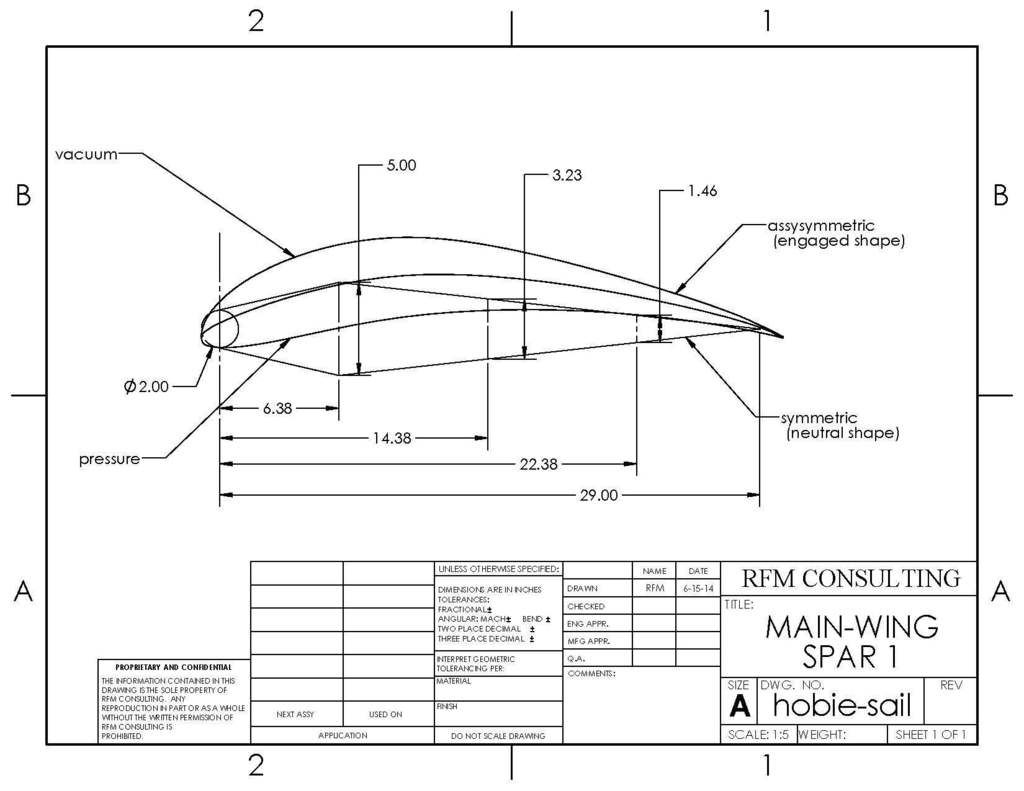TomT:
That's one of the designs I looked at, and designed one of my concepts around (but never built). Though not rotofurling like my other designs, I liked it because it can collapsed vertically from a halyard.
The first pass of the design had the mast at the widest point of the Eppler 420 wing but I ran into great difficulty working out the mechanical aspects of changing the wing from it's symmetric (neutral) shape to an Asymmetric shape on either side when engaged. I simply couldn't figure out how to do it without all kinds of levers and cable inside.
I ended up moving the mast back to the front leading edge and adding air inlets at the leading edge (like a parasail) to fill the inside with pressure.
The design shown has no mechanical mechanisms of any kind it simply uses natural forces (pressure on one side vacuum on the other to change the sail form to it's asymmetric shape when engaged. When in neutral the shape (not engaged) the wing has no drag, but does not provide any propulsion either.
The design shown is just the 1st spar (at the top of the mast), the spars would be spaced somewhere between 15 and 24 inches apart (7-10 spars). To derive the remaining spars everything is computed by percentages. For example the widest point is 22% if the overall length behind the front of the sail (ie 6.38"/29" =.22 (22%). Obviously the actual curvature is created by the battens, the cross rods at each intersection maintain the relative shape between the outside and inside surfaces as the center of the sail flexes from the natural pressure/vacuum created as you increase the angle of attack on the wing (keep in mind the inside of the sail is filled with pressurized air from the air inlets at the mast.
The first and second spars are the critical spars, and will have an angled brace from the mast on the second spar going up at an angle to the back of the first spar (chances are the halyard will attach to that brace). The actual battens could be F18 type square type sail battens or similar in sleeves.
An external boom would likely be required (like windsurfers use) somewhere near mid sail with a tension lines leading to the top rear (all would collapse when the sail comes down).

I have no plans to do any more, I'm pretty happy with what I currently have, been running for quite a while now with no problems and the boat performs to my expectations.
Hope this helps
FE







